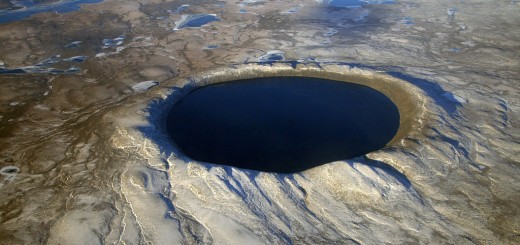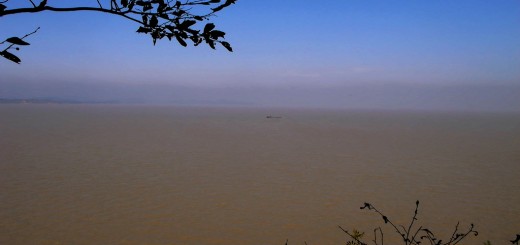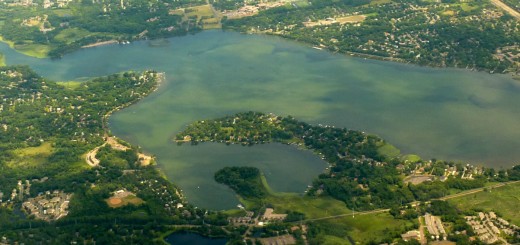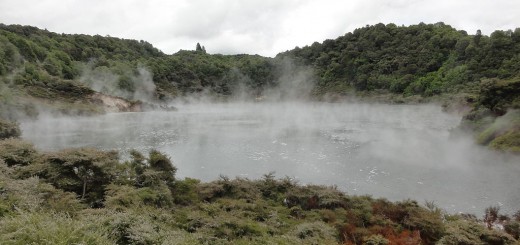Dragon’s Breath Cave Holds the World’s Largest Underground Lake
5
Barchan Dunes near the Kalahari Desert, Namibia. (Credit: Monica Guy via Creative Commons)
The first explorers to peer down a hole near Namibia’s Kalahari Desert felt a warm rush of humid air to their faces. They looked closer, but all they could see was a deep narrow passage.
Though there’s no record of it, one of them probably kicked a rock into the shadowy expanse – a perfectly normal way to gauge its depth. The rock bounces off a ledge or two, flicks off a branch and fades into darkness. The team leans closer, listening with shallow breaths for the end of the pebble’s journey. Was that a splash?
The next step was obvious – the team had to go in. No doubt they expected a simple cave. Maybe a few puddles at the bottom, some winged bats perched upside down. So they could see what lay ahead, they needed ropes, lights and climbing skills.
According to the International Association of Nitrox & Technical Divers – Southern Africa, the first passage is a rocky slope downwards for approximately 16 feet which ends in a small choke. Beyond the choke is a vertical drop of 22 feet onto a ledge. Another drop of 39 feet from there would have taken them to another ledge, with the last drop of 120 feet opening into a massive underground lake.
The discovery was made in 1986 and the cave – because of the humid air that rises from it – has come to be known as Dragon’s Breath Cave. In its belly lies the largest underground non-subglacial lake in the world. So large, in fact, that divers have only been able to chart its depths to 430 feet.
The lake has very clear water. Shielded from the elements, there is little wave action to kick up sediment. Its underground location keeps its water temperature stable. And zero-sunlight conditions limit photosynthesis. The only life forms are white shrimp and worm-like creatures.
Video: AFRICA Series, Discovery Channel














[…] http://www.lakescientist.com/dragons-breath-cave-holds-worlds-largest-underground-lake/ […]
The lake is also home to the world’s most isolated fish – The Golden Catfish.
Actually Dragons Breath Cave’s lake is the only lake in the world that has the most rare fish in the world, The Golden Catfish.
Yes, golden catfish……. i was wondering why they only mentioned the white shrimp & worms.
[…] of the world’s largest underground lakes are subglacial. But not all of them. Dragon’s Breath Cave, found in the Otjozondjupa region of Namibia, is actually the largest non-subglacial lake in the […]